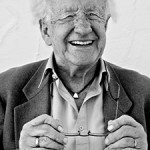Continuities in U.S. history
By Johan Galtung
From Appomattox, VA – USA
The Civil War ended 147 years ago with General Robert E. Lee of the CSA, Confederate States of America, capitulating to General Ulysses S. Grant of the USA, United States of America. Ended? Not quite. Grant accepted the capitulation of the Army of Northern Virginia; the others capitulated one by one (like Army of Tennessee 26 April, Trans-Mississippi June 2 and finally, November 6, Confederate cruiser Shenandoah surrendered).
The Washington Post (Apr 1, 2012) celebrated the opening of the Appomattox branch of the Museum of the Confederacy the day before, quoting the museum curator: “it is one of the great turning points, if not the great turning point, in American history–when we kind of decided once and for all exactly what it means when we say, ‘liberty and justice for all.’”
Turning point? Not quite. Grant could not accept surrender of the CSA as that would recognize the Confederacy. One rebel at the time. Soldiers within 20 miles of Appomattox, no actor!, were generously given US Army rations as they were starving, and free passage on federal means of transportation on their way home.
We sense a theme: no recognition of collective actors with a cause. Conflict is seen as rebellion-insurgency-treason of individuals, perhaps with leaders (get them!). A theme inherited from the English: wherever they invaded and occupied, they were law and order and legitimacy; any resistance was insurgency. Up till today, in Iraq, Afghanistan, Somalia. First Nation Americans might be friendly or hostile but no relation to the Iroquois Federation; mainly individuals bribed into friendliness or killed if hostile.
No relation to Latin America; eliminate a Castro, a Chavez.
And no class war in the USA, only individual success and failure, in a competitive, even social Darwinist, struggle.
Liberty and justice for all? Not quite. Yes, the South wanted to keep slavery–all 4 million of them, robbed, from Africa, and a slave-based economy, agriculture and early industry, larger than railroad+industry+banking in the North. But slavery was not the primary cause of the war. Had it been, the North would not have entered the Compromise of 1850 keeping the Union united provided federal forces could be used to catch fugitive slaves.
But secession came, starting with South Carolina till the CSA flag had 17 stars. Secession was the tipping point, invading, occupying down to New Orleans, and winning, greatly helped by twelve black regiments, 150,000 soldiers, mobilized when the situation looked critical for Washington, six of them at Appomattox.
Had “liberty and justice” for African-Americans been their key concern the post-war reconstruction would not have been beaten by the successful Ku Klux Klan guerrilla for white supremacy. (One of the founders in 1865, later Imperial Wizard, Albert Pike, CSA general, Freemason, was convicted of treason but pardoned by US President Andrew Johnson, Freemason). “Jim Crow”, lynching, no rights. Federal USA could have intervened at any time but did almost nothing till the 1950s.
Regardless of the ambiguities in Abraham Lincoln’s mind, the slaves were emancipated, and used, for the war against secession, up to Appomattox “where the nation was reunited”, and then left to their terrible destiny. We sense American natives pushed into reservations, people in El Salvador left behind when there was no longer a danger of “communism”, Afghanistan now in the process of being left behind. Devastated, a wreck.
No turning point. They had been united before, against the English who had taught them also to kill their own, same race, religion, language, look-alikes. They did so to the tune of 725,000 from battle and disease, well above 7 million of today’s population; terrible prison camps.
They reunited for an imperial USA with the Puritan North defining the imperial quest, using the Baptist South, soldiers, forts, military academies for a cause beyond the Confederacy. But they had been united in that before, conquering native lands in a pincer movement from Jamestown, VA and Plymouth, MA; in the Monroe doctrine and the Mexico 1846-48 war. Imperialism was not new.
One thing was new, however: using technology for total war. General Sherman’s brutality against civilians and civilian society set the tone for the centuries to come. Mission achieved, the Civil War won, he spent the next years killing Native Americans.
We note in passing that when resistance is equated with rebellion, insurgency and treason, then peacemaking becomes very difficult. There is nobody to sit down with to talk it over, to search for solutions; only rebellious individuals. The slaves had no chance of organizing yet there was a cause, freedom, but they were burnt alive, lynched as rebellious individuals.
We also note the generosity after unconditional capitulation: from now on there will be redemption as long as you behave on our terms. We will help even Germans and Japanese on the road to our democracy and free market. If not, we leave you to rot on your own terms, only seeing to it that there will be no more rebellion.
It takes a hard stomach, a frozen heart, and a deep culture, to believe that God so wants because we are chosen, exceptional, beyond human laws, obeying only our god. If the CSA had surrounded Grant, who had surrendered; would South have behaved the same way? Probably not: leave us to ourselves is all we ask for; you go your way, we ours. We are not your blueprint, nor are you ours.
Untold suffering, yes. But what looked new, emancipation, was twisted to fit the patterns of the past. And the defeat was thwarted for one more century: civil rights won by black nonviolence.
